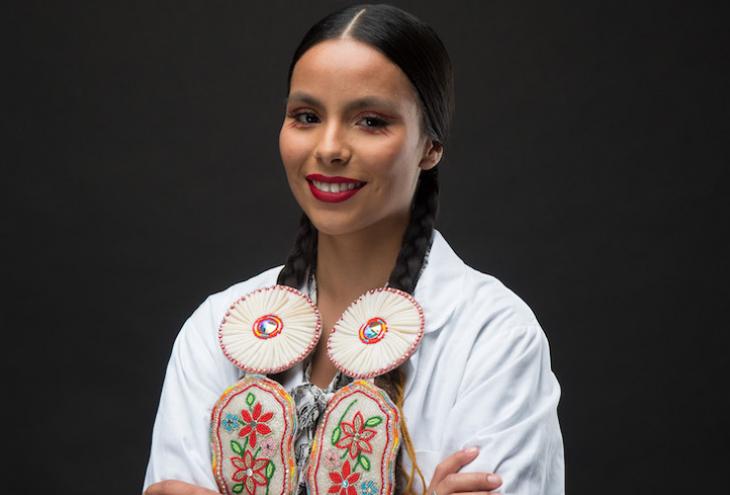Nikita Kahpeaysewat comes from a long line of residential school survivors and hundreds of years of colonial resistance. But, she says, she is the first generation in her family to grow up with all the tools she needs to succeed. “I remember being eight years old and making a promise to my mom that I was going to graduate from high school and someday get a degree,” she says. “I got lost along the way but eventually found my way back!”
Following high school, Kahpeaysewat joined the Canadian Armed Forces and graduated from basic military training as a private. After much consideration, she decided not to continue an enlistment and instead spent three years pursuing a career in aesthetics. “I used these years to focus on who I am and who I want to be, all the while working and living in an adult world that has little to no forgiveness” she says. “I realized that I couldn’t work hard for other people’s goals. What is the point of living if I cannot do what I’m passionate about?”
She discovered that her passion is rooted in her connection to her community, Moosomin First Nation, located beside Murray Lake near the small town of Cochin, Saskatchewan, with over 1,300 members and about 74,500 acres of land. But Kahpeaysewat remembers that growing up on the reserve, it didn’t seem that big. Although Saskatchewan is mostly flat farmland, Moosomin has running hills, thick blueberry bushes, a couple of marshes, and a variety of boreal forest wildlife. “I grew up surrounded by green grass, tall trees, blue lakes, and many adorable rez dogs,” she says. “Looking back, it’s no wonder I grew up with an appreciation of Mother Earth and all her creatures. I am connected to her and she is to me.”
In 2016, as the Dakota Access Pipeline protest was happening at Standing Rock in North Dakota, Kahpeaysewat decided to go back to school. “I had moved to Calgary, Alberta, and was conflicted,” she explains. “I thought, how can I dedicate my life to make sure natural resources are protected? And that was how I began my journey into environmental science.”
During her first two years of university, Kahpeaysewat worked multiple part-time jobs to keep herself afloat. When work began to interfere with her studies, she started picking up student loans. “Loans on loans on loans,” she says. “Even though my community sponsors my education, living in the city on my own is very expensive.”
The difficulties didn’t stop there. Her first two years in Calgary — seven hours from home — were lonely. “For an Indigenous person, family and community ties are very important as they keep me grounded and connected to the land. I am blessed with a big, beautiful blended family,” she explains. “In the end, family is everything, so establishing new connections in the city was a must for my sanity and success. Wherever you are, whatever you are doing, stay connected to our people and the land.”
When Kahpeaysewat began her journey at Mount Royal, the school’s Iniskim Centre (a campus resource for Indigenous students) was her safe spot. With their support, she has her own Powwow Fit class at the recreation center, where she teaches the movements of Indigenous dance styles. Kahpeaysewat has mentored other students through the BMO Indigenous mentorship program, and has worked for the MEG Energy Summer Science Camp hosted by the Aboriginal Science and Technology Education Program. “Blessings on blessings,” she says. “Thank you, Iniskim Centre, for the unlimited support and opportunities. I know I wouldn’t have gotten this far without my university family.” She has also become involved with AISES, traveling to the 2018 National Conference in Oklahoma City and heading to the second .caISES summit in Montreal.
Kahpeaysewat is glad to let others know what powers her success. “Many people will tell you motivation will get you far, but motivation eventually runs out,” she says. “I say determination and loyalty are key qualities to success. Loyalty to the investment you are establishing for your future self. Determination to get there and work through all the problems that come your way. Believe me, it’s not easy and it shouldn’t be. For students who hope to go to college, don’t go to university until you are ready. You will know when you are ready.”











